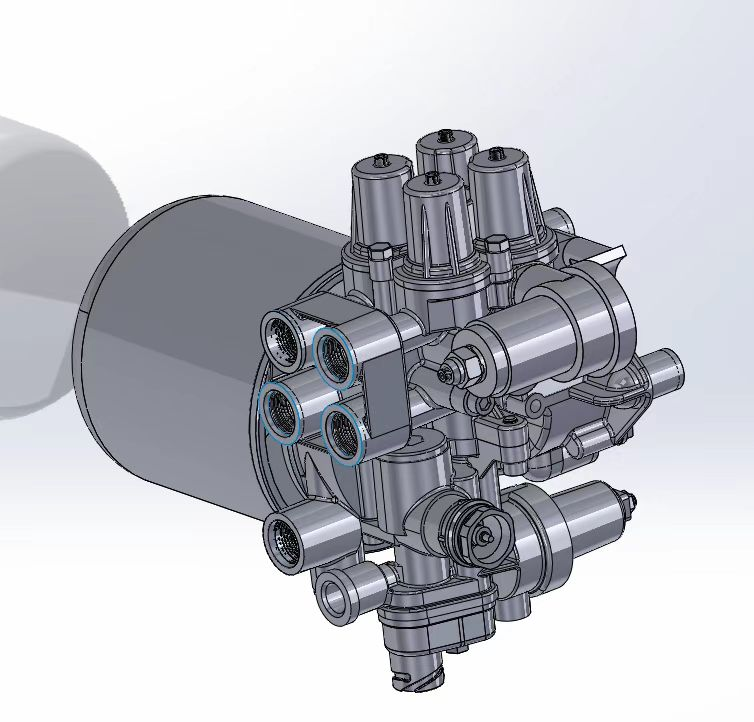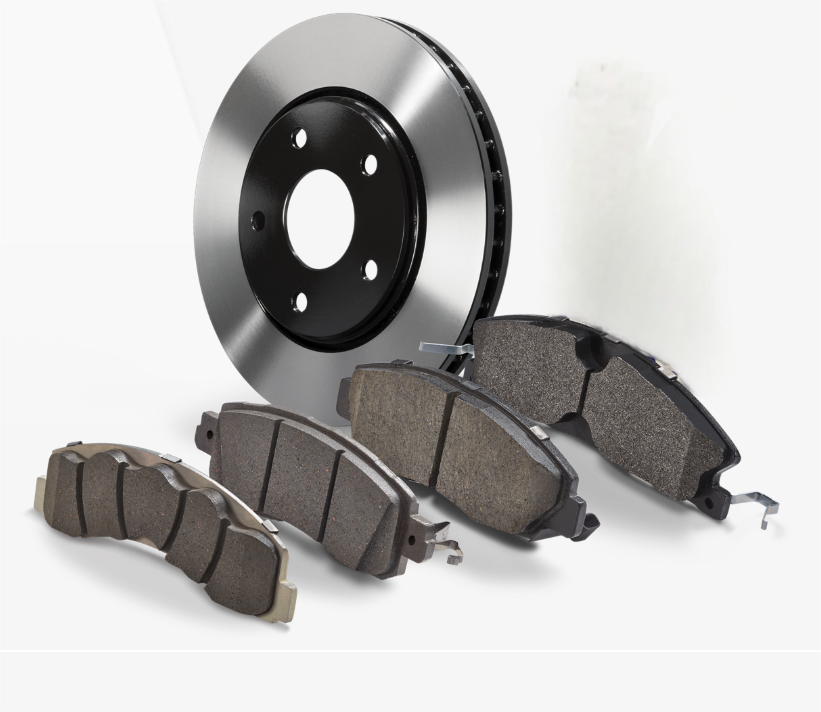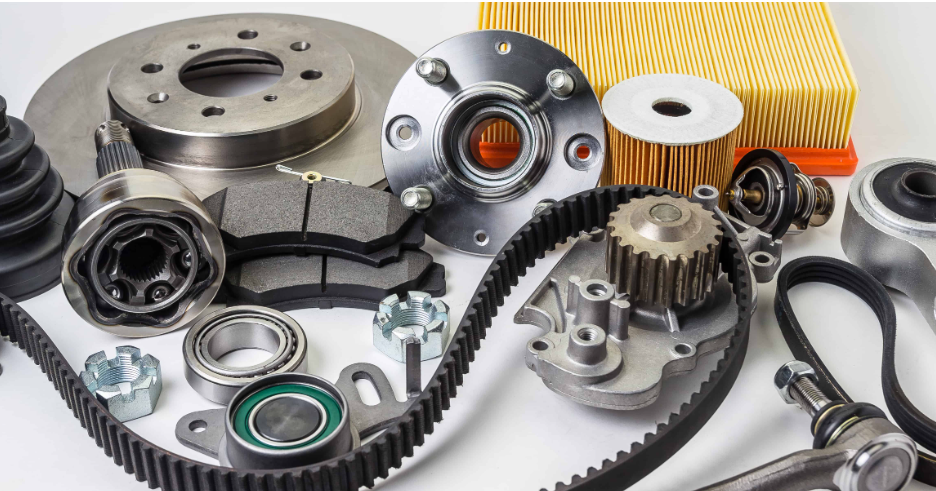How Automotive Air Conditioning Hoses Enable Efficient Refrigerant Transport
The Role of AC Hoses in Circulating Refrigerant Through the Cooling Cycle
The air conditioning hoses in cars act kind of like blood vessels for the refrigerant, moving it through those four main steps of the HVAC process compression happens first, then condensation, followed by expansion and finally evaporation. These tough rubber tubes keep everything sealed tight so the refrigerant can pick up heat when it passes through the evaporator part of the system and then dump that heat out at the condenser section. A recent study from SAE International back in 2023 showed something interesting too. When these hoses are properly sealed without any leaks, they actually make the whole cooling system work about 22 percent better than systems where the seals have been damaged or worn down over time. This really points to how important good sealing is for keeping energy waste to a minimum in vehicle air conditioning systems.
Integration With Key Components: Compressor, Condenser, and Evaporator
The high pressure hoses move superheated refrigerant gas from the compressor all the way to the condenser, where it actually changes state into a liquid form. After this transformation, low pressure lines take over, transporting the cooled down liquid through the expansion valve right to the evaporator unit. For this whole system to work properly, the hoses need to be made from really tough materials. They have to handle extreme temperature ranges between minus 40 degrees Fahrenheit up to 300 degrees Fahrenheit without breaking down. Plus these materials must stand up against constant vibrations too since any failure in connection points could lead to serious problems in critical parts of the system.
Maintaining Pressure Integrity During Temperature Regulation and Heat Exchange
Today's air conditioning hoses are built with multiple layers, typically featuring nitrile rubber on the inside and steel braiding for reinforcement. This design helps handle the big differences in pressure we see in these systems, from around 25 psi on the low side all the way up to 250 psi on the high side. Tests run by the Department of Energy back in 2023 showed something interesting though. After going through their thermal cycling process, which simulates years of use, the best quality hoses still held about 98% of what they could originally withstand before bursting. That means even after driving 100 thousand miles worth of simulated wear and tear, these hoses keep transferring heat efficiently just like they did when new, which matters a lot for real world performance where temperatures fluctuate constantly.
Ensuring Consistent Airflow and Cabin Comfort Through Reliable Refrigerant Flow
Even small leaks from deteriorating hoses can reduce cooling capacity by 15–30% within six months, according to SAE International’s 2024 climate control report. By preserving optimal refrigerant flow, quality hoses help evaporators consistently deliver 40–50°F air—the standard for passenger comfort across most vehicle models.
Types of Automotive Air Conditioning Hoses and Their System-Specific Functions
High-Pressure (Discharge) Hoses and Their Critical Role in Compressor-to-Condenser Transfer
The high pressure discharge hose is what carries refrigerant between the compressor and condenser, handling pressures as high as 400 psi. These hoses are built tough with multiple layers of nylon or synthetic rubber plus steel wire inside to keep them from collapsing when exposed to intense heat and pressure conditions. When these hoses fail, the consequences can be serious for the system. Compressors often seize up completely, which means expensive repairs down the road. According to recent industry data, fixing these issues typically costs anywhere from around $800 to over $1,200 depending on location and specific equipment involved.
Low-Pressure (Suction) Hoses for Returning Refrigerant to the Compressor
Low-pressure suction hoses return gaseous refrigerant (at 25–40 PSI) back to the compressor, completing the cooling loop. Their corrugated design accommodates thermal contraction while maintaining vacuum integrity. A 2022 SAE study found that well-maintained suction hoses enhance system efficiency by 12–18% compared to degraded units.
Liquid Lines: Delivering Cooled Refrigerant to the Evaporator Efficiently
Liquid lines typically have smaller diameters (5–8mm) to accelerate refrigerant delivery from the condenser to the evaporator. Made from aluminum or barrier-lined composites, these hoses prevent premature gas expansion, preserving cooling potential. Thermal imaging tests show undersized lines increase cooling cycle times by 34%.
Material Design Variations: Rubber vs. Synthetic Blends for Durability and Performance
Modern AC hoses use chlorobutyl rubber for standard applications and thermoplastic elastomers (TPE) in high-performance vehicles. TPE blends offer superior resistance to ozone degradation—lasting three times longer than conventional materials in accelerated aging tests conducted by the Automotive Fluids Consortium (2023)—while maintaining flexibility across a wide temperature range.
Consequences of Automotive Air Conditioning Hose Failure on Cooling Performance
Identifying Common Failure Signs: Leaks, Hissing Sounds, and Oil Residue
Hoses account for 27% of AC system failures (SAE 2024), often showing early signs like oily deposits at fittings. Hissing noises during operation indicate refrigerant escaping through microfractures, while greenish discoloration suggests molecular breakdown. These issues frequently arise during seasonal temperature shifts, which stress rubber components through repeated expansion and contraction.
Impact of Refrigerant Loss on System Efficiency and Environmental Compliance
When a hose starts to fail, it might leak around half a pound of refrigerant each month, which cuts down on cooling power somewhere between 30 to 40 percent according to the EPA from last year. The way modern cooling systems work means they need just the right amount of refrigerant inside to keep those pressure balances where they should be. There are strict rules about how much leakage is allowed these days for R-1234yf systems specifically. These regulations say anything over 0.05 ounces per year counts as excessive. And if someone doesn't follow them properly, their vehicle could face penalties as high as four thousand five hundred dollars under California Air Resources Board guidelines back in 2024. That's pretty serious stuff for anyone working with automotive air conditioning systems nowadays.
Long-Term Risks of Degraded Hoses: Compressor Damage and Complete System Failure
| Failure Stage | Consequence | Average Repair Cost |
|---|---|---|
| 6-12 Months | Compressor oil contamination | $220 |
| 12-18 Months | Condenser blockage | $410 |
| 18+ Months | Compressor seizure | $900+ |
Extended hose degradation allows moisture infiltration, forming corrosive acids that damage compressor bearings. This cascading failure leads to full system replacement in 38% of cases (SAE 2024).
Evaluating Aftermarket Hoses: Balancing Cost, Quality, and Long-Term Reliability
OEM-spec hoses last 72% longer than budget alternatives in thermal cycling evaluations. While aftermarket options cost 30–60% less initially, they are responsible for 68% of premature AC failures (ACA 2024). Buyers seeking durability should prioritize SAE J2064-certified hoses with robust barrier-layer construction to avoid recurring repairs.
Durability and Chemical Compatibility of AC Hoses with Modern Refrigerants
Withstanding Thermal Cycling, Vibration, and Underhood Temperature Extremes
Air conditioning hoses have to deal with some pretty tough conditions beneath the hood where temperatures can reach as high as 250 degrees Fahrenheit or 121 Celsius. They also go through constant heating and cooling throughout the day as engines warm up and cool down alongside refrigerant systems. According to research published in HVAC Systems Journal last year, newer multi-layer hose designs cut down on wear and tear by around 43 percent when compared to older single layer models. The best ones use premium synthetic rubber that stays pliable even at extreme temperatures ranging from minus 40 all the way up to 212 degrees Fahrenheit. This helps prevent cracking during cold winters and keeps them from getting too soft in hot summer weather.
Compatibility with R-134a, R-1234yf, and Next-Generation Eco-Friendly Refrigerants
Newer refrigerants like R-1234yf operate at 20% higher pressures than R-134a, demanding hoses with enhanced inner barrier liners. SAE J2842-certified materials resist swelling when exposed to hydrofluorocarbon-based coolants, helping prevent microleaks responsible for 37% of efficiency losses.
How Material Quality Influences Overall AC System Longevity and Efficiency
Tests in real world conditions show that equipment equipped with HNBR hoses lasts around 65 percent longer compared to standard EPDM setups because they stand up better against ozone exposure and chemical degradation. The higher quality materials make a big difference too, reducing refrigerant leakage to about 0.25 pounds annually. This matters a lot when it comes to complying with EPA Section 608 regulations regarding leaks. Plus, vehicles maintain more than 90% of their original cooling power for much longer periods during their operational lifespan thanks to these improvements.
Inspection and Maintenance Best Practices for Automotive Air Conditioning Hoses
Systematic care of automotive AC hoses is essential for reliable refrigerant flow and long-term system health. Following a structured maintenance plan helps drivers avoid 53% of cooling-related repair costs (SAE International 2023) while preserving cabin comfort.
Routine Inspection Techniques to Detect Cracks, Swelling, and Connection Wear
Monthly inspections are important for spotting surface cracks, abrasions, or oil spots around fittings which often signal potential leaks developing under the hood. When doing summer maintenance work, grab those UV dye kits they sell at auto parts stores these days. They really help catch those tiny hairline fractures we just can't see with our eyes alone. Don't forget about those hose clamps either. Give them a good look over every six months or so for signs of rust buildup and check if they're still tight enough. Loose connections seem to be behind quite a few premature AC breakdowns according to mechanics I've talked to, though nobody ever mentions exact percentages when discussing repair stats.
Preventive Maintenance Schedule for Optimal Hose Performance and System Reliability
Follow a seasonal maintenance routine:
- Spring: Perform pressure tests before peak cooling demand
- Fall: Clean debris from hose surfaces after heavy summer use
- Biennially: Replace O-rings and seals at junctions
Vehicles using R-1234yf refrigerant should undergo annual evaluations of barrier hoses to prevent permeability issues associated with older rubber compounds.
Integrating Hose Care Into Comprehensive Vehicle Cooling System Maintenance
It makes sense to check AC hoses when doing radiator flushes and coolant changes since these services often reveal similar problems like corroded mounting brackets. Recent research from 2023 using thermal imaging showed something interesting too vehicles where technicians combined regular hose checks with compressor diagnostics tended to have cooling systems lasting almost 28% longer than those fixed with separate approaches. When replacing hoses during big service jobs, make sure they match what the manufacturer recommends regarding their ability to resist chemicals. This small detail can save headaches down the road.
FAQ
What are the main functions of automotive air conditioning hoses?
Automotive air conditioning hoses transport refrigerant through the cooling cycle, manage pressure integrity during temperature regulation, and ensure consistent airflow and cabin comfort.
What materials are used in automotive AC hoses?
Modern AC hoses typically use chlorobutyl rubber or thermoplastic elastomers (TPE) for durability, often featuring nitrile rubber interiors and steel braiding for reinforcement.
How can I tell if my AC hose is failing?
Signs of a failing AC hose include leaks, hissing sounds, oil residue, and discoloration. Monthly inspections can help detect these issues early.
How often should I perform maintenance on my car's AC hoses?
Follow a seasonal maintenance routine, including pressure tests in spring, cleaning in fall, and replacing O-rings and seals biennially.
What happens if an AC hose fails?
Failure can lead to decreased cooling efficiency, environmental non-compliance, and potential damage to system components like the compressor.
Table of Contents
-
How Automotive Air Conditioning Hoses Enable Efficient Refrigerant Transport
- The Role of AC Hoses in Circulating Refrigerant Through the Cooling Cycle
- Integration With Key Components: Compressor, Condenser, and Evaporator
- Maintaining Pressure Integrity During Temperature Regulation and Heat Exchange
- Ensuring Consistent Airflow and Cabin Comfort Through Reliable Refrigerant Flow
-
Types of Automotive Air Conditioning Hoses and Their System-Specific Functions
- High-Pressure (Discharge) Hoses and Their Critical Role in Compressor-to-Condenser Transfer
- Low-Pressure (Suction) Hoses for Returning Refrigerant to the Compressor
- Liquid Lines: Delivering Cooled Refrigerant to the Evaporator Efficiently
- Material Design Variations: Rubber vs. Synthetic Blends for Durability and Performance
-
Consequences of Automotive Air Conditioning Hose Failure on Cooling Performance
- Identifying Common Failure Signs: Leaks, Hissing Sounds, and Oil Residue
- Impact of Refrigerant Loss on System Efficiency and Environmental Compliance
- Long-Term Risks of Degraded Hoses: Compressor Damage and Complete System Failure
- Evaluating Aftermarket Hoses: Balancing Cost, Quality, and Long-Term Reliability
- Durability and Chemical Compatibility of AC Hoses with Modern Refrigerants
- Inspection and Maintenance Best Practices for Automotive Air Conditioning Hoses
- FAQ







